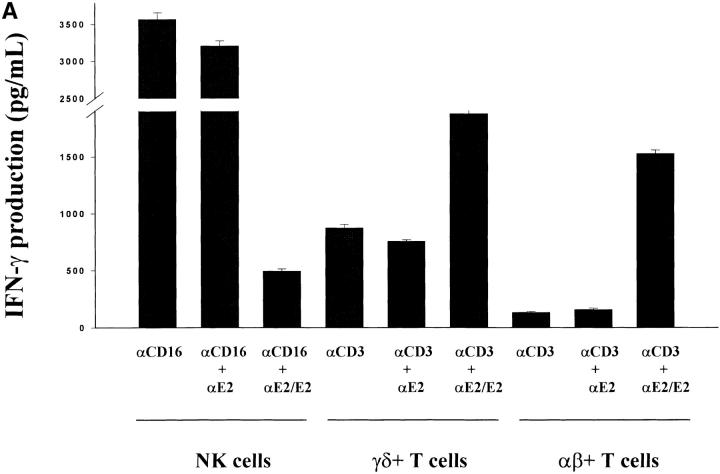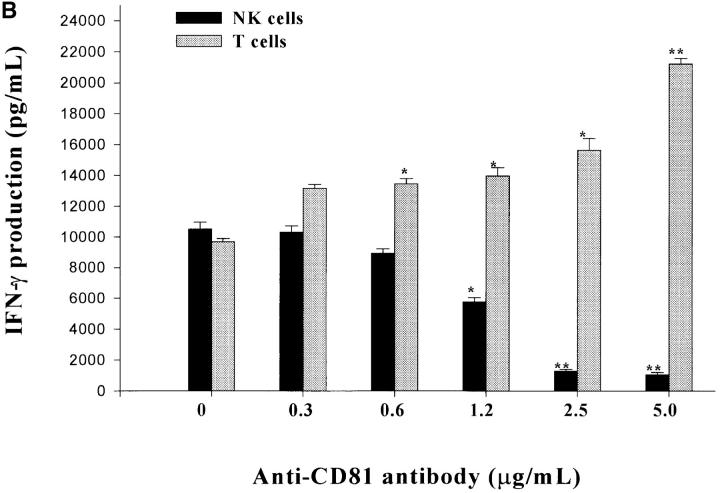Figure 3.
Differential effects of CD81 crosslinking on the activation of NK cells versus TCR-γδ+ or TCR-αβ+ T cells. (A) Purified NK cells, TCR-γδ+ T cells, or TCR-αβ+ T cells were cultured in wells (105 per well) precoated with following antibodies: (i) 0.5 μg/ml anti-CD16 (NK cells) or anti-CD3 (T cells); (ii) anti-CD16 plus anti-E2 (5 μg/ml) for NK cells or anti-CD3 plus anti-E2 for T cells; or (iii) anti-CD16 plus immobilized E2 (1 μg/ml anti-E2/E2) for NK cells, or anti-CD3 plus immobilized E2 (anti-E2/E2) for T cells. TCR-γδ+ T cells were derived from bacteria-expanded cultures, as described in Materials and Methods. TCR-αβ+ T cells were derived from anti–CD3- or ConA-activated PBL. Each culture contained 200 μl of medium supplemented with IL-2 (100 U/ml). Supernatants were collected after 18 h and assessed for the IFN-γ levels by ELISA. IFN-γ levels are presented as mean (pg/ml) ± SD of duplicate samples. Data are representative of two independent experiments using different cell preparations. (B) Purified NK cells or TCR-γδ+ T cells were cultured in wells precoated with varying concentrations of antibody specific for CD81. For NK cells, IL-2 (100 U/ml) was added to each well. For T cells, wells were precoated with varying concentrations of anti-CD81 along with a constant amount of anti-CD3 (0.5 μg/ml). Culture supernatants were collected after 18 h and assessed for IFN-γ levels by ELISA. IFN-γ levels are presented as mean (pg/ml) ± SD of duplicate samples. Data presented is derived from one of two independent experiments. (*P < 0.05; **P < 0.01; Student's t test).


